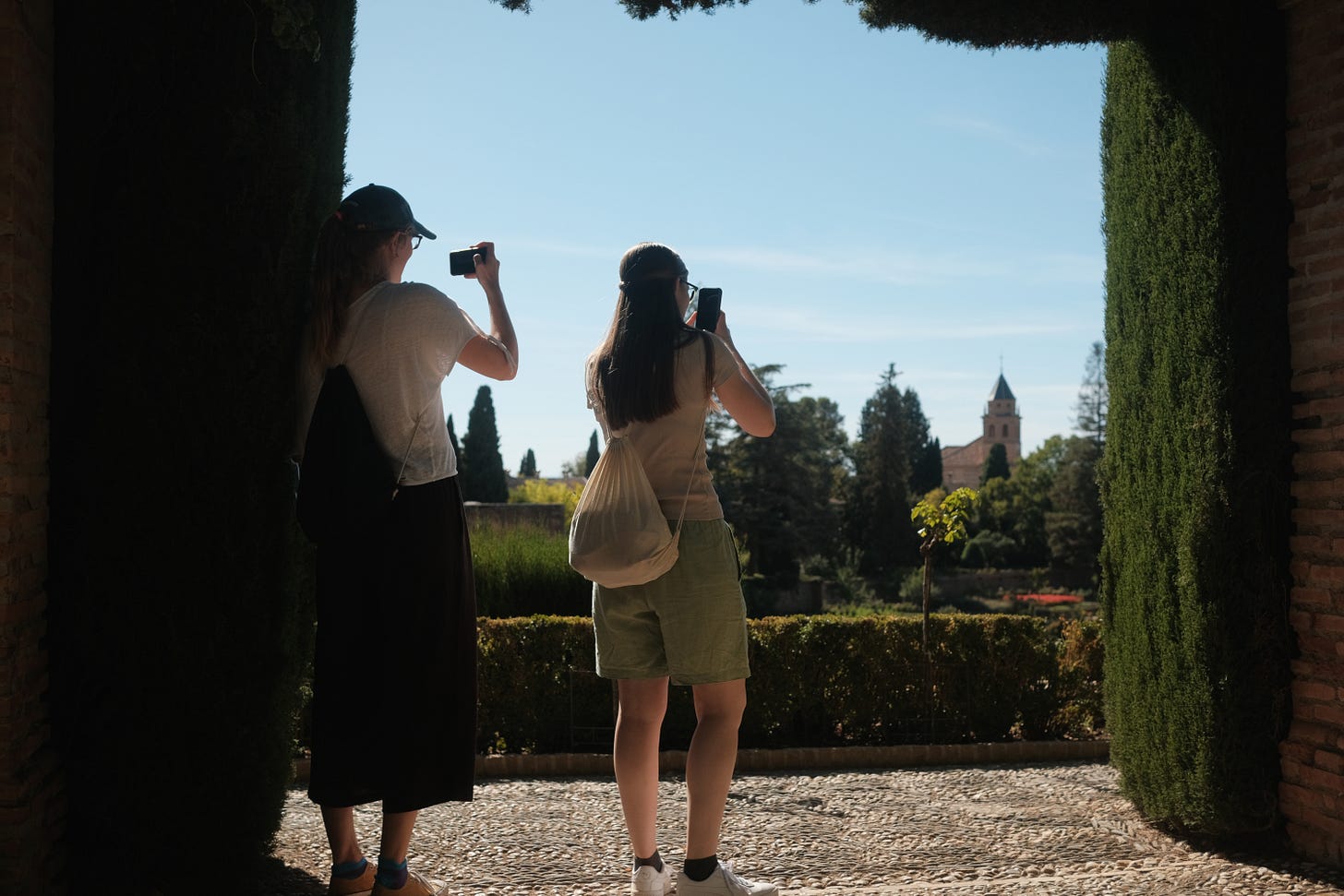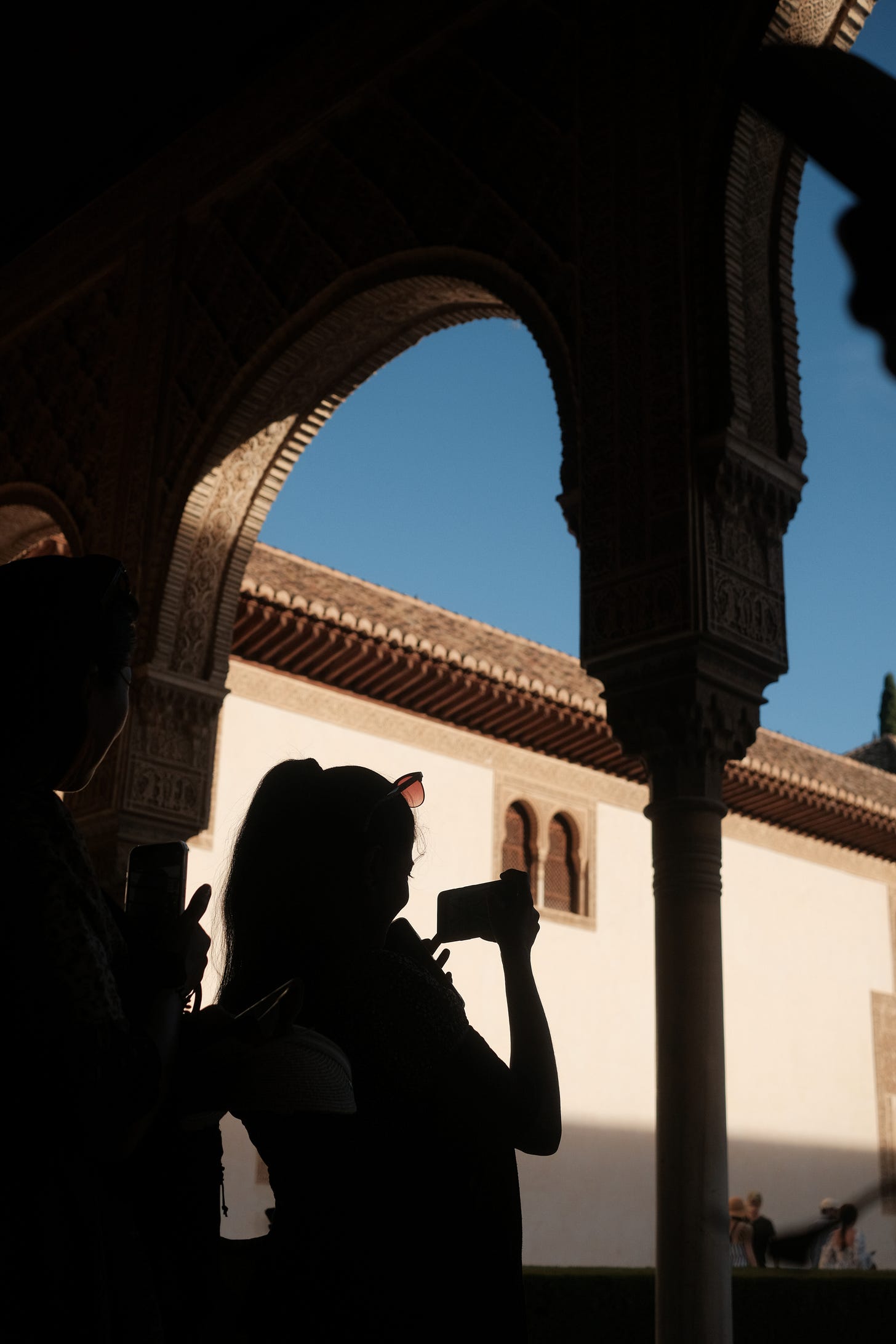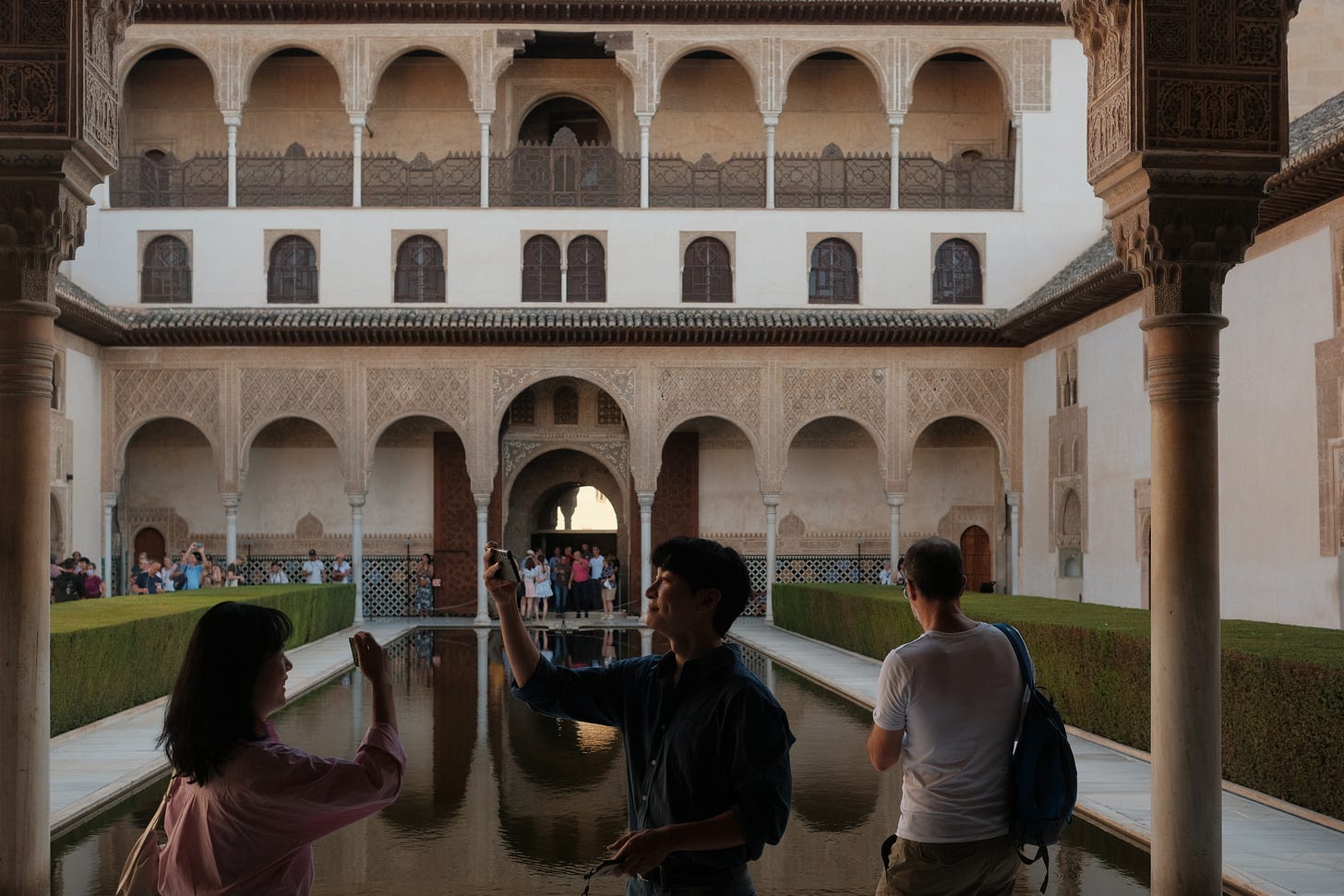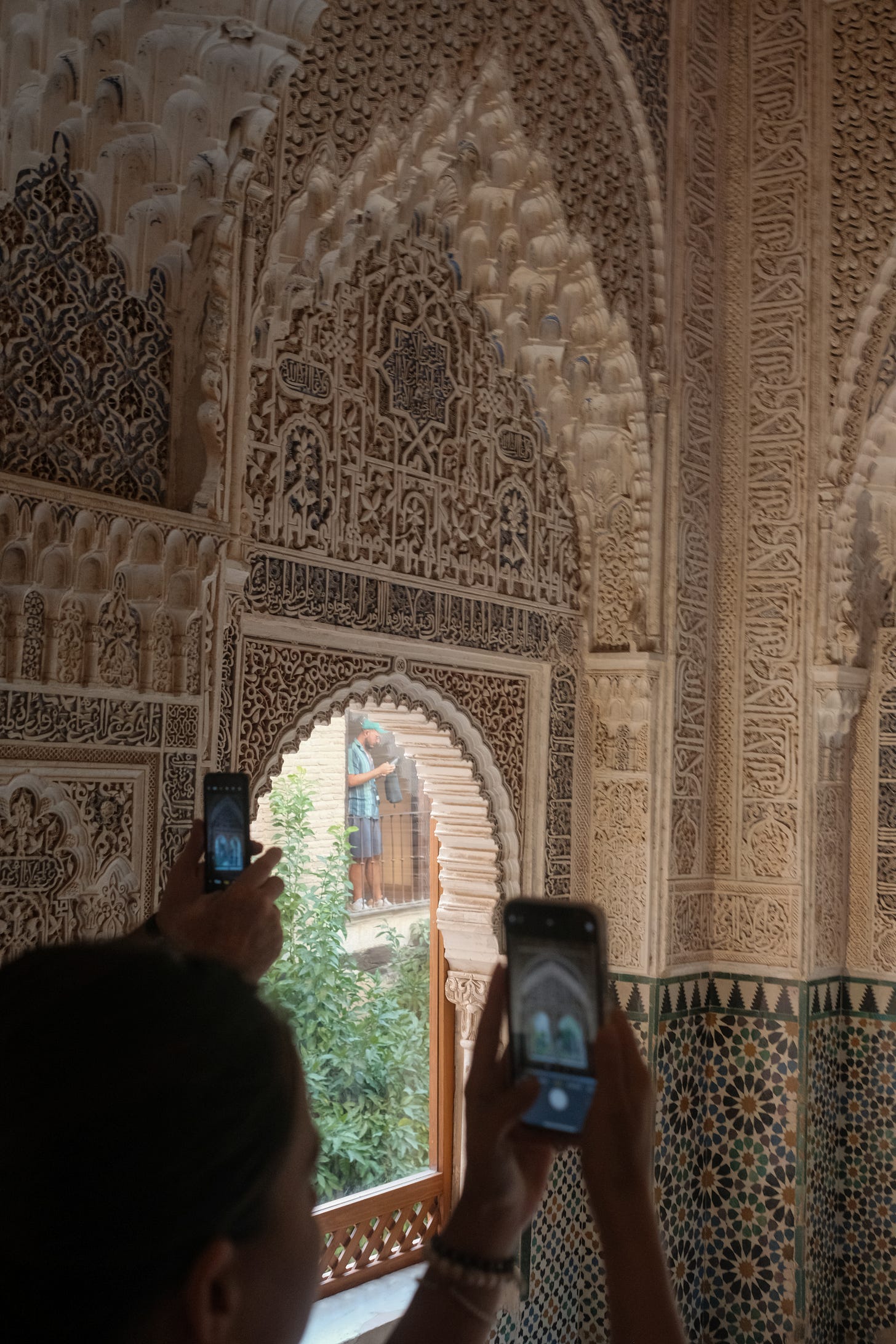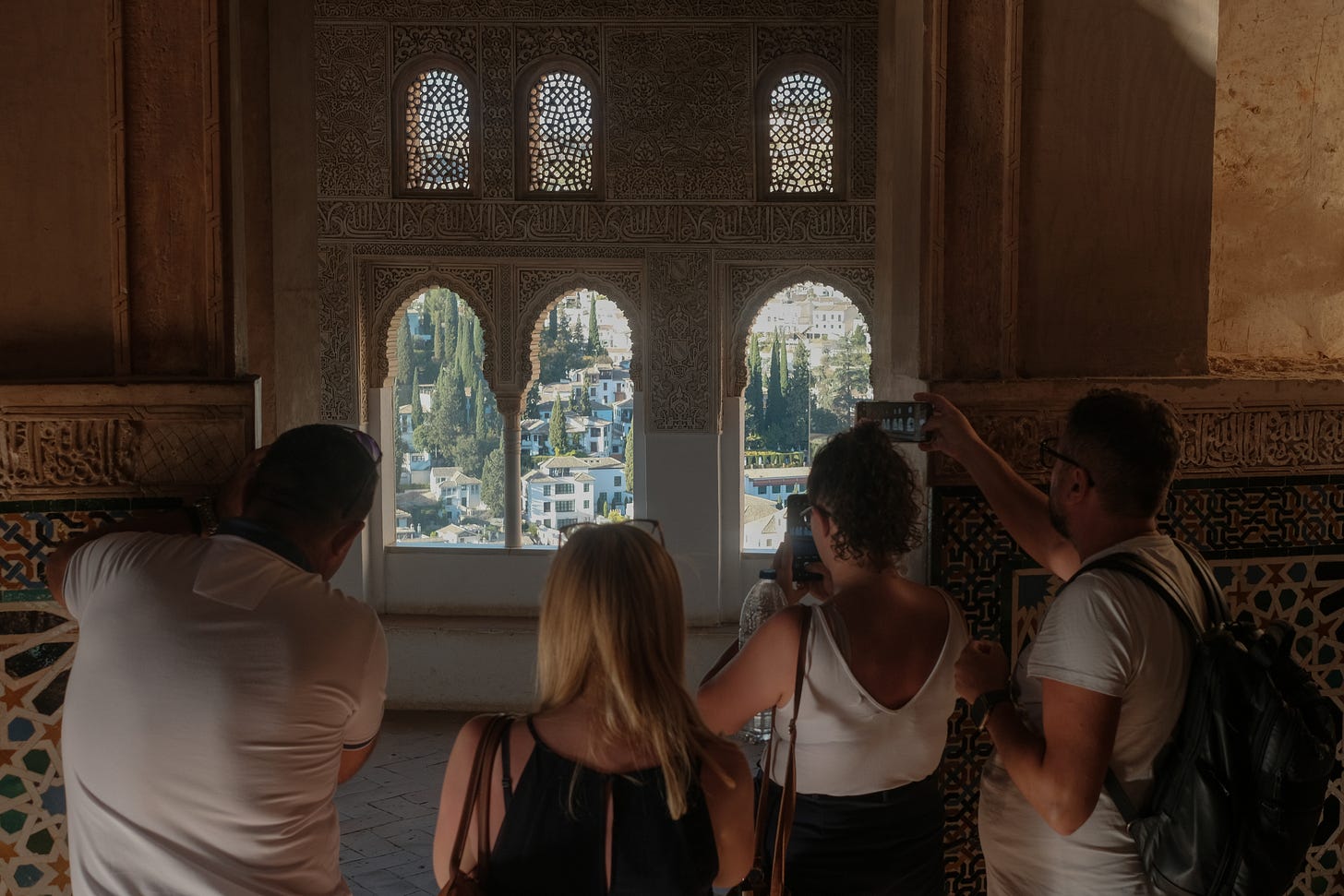The art of noticing: on photographing mindfully
Has photography made our travels less immersive? Is it more about the photos than the experience?
Scenes like the one above have become common. This is from a visit to Alhambra in Granada, Spain, one the of the most visited tourist attractions in the country. As I walk into the impressive complex, I can’t help but notice the number of phones held up to take photos. There are so many people taking photos that my experience of visiting the site almost becomes about that. I am looking at the people taking photos more than I am looking at the impressive architecture I came to see.
In every direction, there is someone taking photos: of the doors, ceiling, fountains, walls, doorknobs… Granted each corner of the site is genuinely beautiful, but still, it feels excessive.
I am having these thoughts, of course, with a camera around my neck. The irony of taking photos of people taking photos is not lost on me.
As I elbow my way through the selfie sticks (dramatic, I know), I am reminded of Daniel Kahneman’s Ted talk about the experiencing self and the remembering self. The experiencing self is the part of us that lives in the present and is concerned with our experience in our lives. The remembering self is the storyteller who keeps track of the narrative we tell ourselves about our lives, based on our memory.
It feels like our camera phones are shifting our collective priority more and more towards the remembering self, at the expense of the experiencing self. So I came up with two unscientific distinction to think about when I am out taking photos while traveling.
Mindless Photography
Mindless photography is the act of taking photos to replace the experience. It’s what happens when I take a photo and move along quickly. It’s outsourcing the effort of experiencing the moment to the camera, to store the memory in photos I can look at later. It’s procrastinating the experience. The focus is on the photo rather than the moment.
Mindful Photography
Mindful photography puts the experience first. It’s a way of documenting a lived experience. The photo comes after the immersion of the 5 senses. In this case, you are noticing more of what’s happening around you in order to find and document the scenes that resonate with you the most. The photo is a representation of a wider memory.
When I came back from the trip, I tried to find any formal research and found this study: Point-and-Shoot Memories: The Influence of Taking Photos on Memory for a Museum Tour. The authors assess the impact of taking photos on memory by having a group of people take a tour of a museum and direct them to photograph certain objects while not photographing others. They then assess the difference in memory between objects they photographed and objects they didn’t:
Despite the added time or attention required to angle the camera and adjust the lens so as to capture the best shot of the object in its entirety, the act of photographing the object appears to enable people to dismiss the object from memory, thereby relying on the external devise of the camera to “remember” for them
It seems that maybe I should even put the camera down once in a while. In Alain de Botton’s book The Art of Travel, he recommends drawing and writing about scenes while traveling. He writes:
[…] there was only one way to possess beauty properly, and that was by understanding it, by making oneself conscious of the factors (psychological and visual) responsible for it. […] the most effective means of pursuing this conscious understanding was by attempting to describe beautiful places through art, by writing about or drawing them, irrespective of whether one happened to have any talent for doing so.
I leave you with a thought experiment from Daniel Kahneman’s Ted talk. Food for thought.
Imagine that for your next vacation, you know that at the end of the vacation, all your pictures will be destroyed and you’ll get an amnesiac drug so that you won’t remember anything. Would you choose the same vacation?





